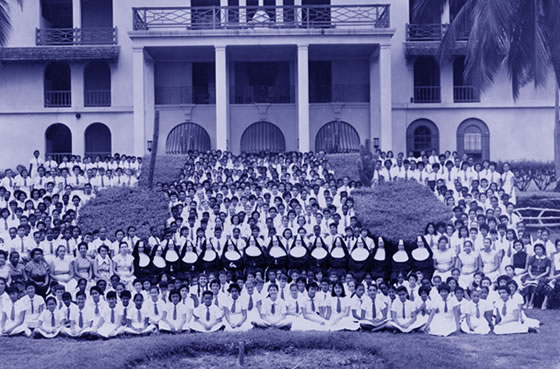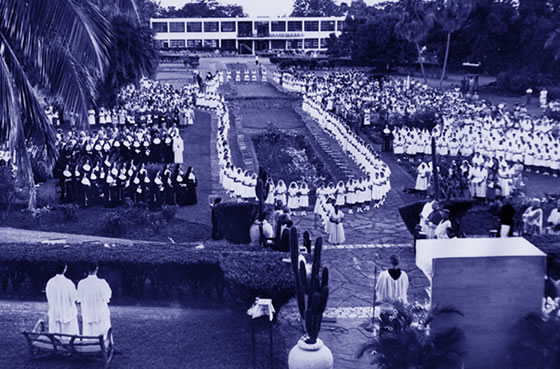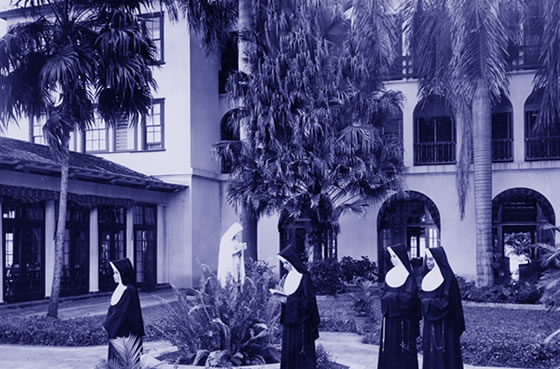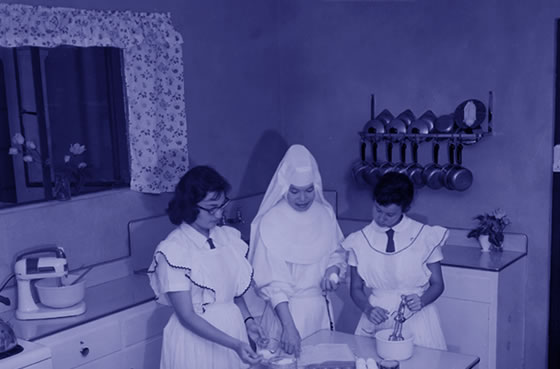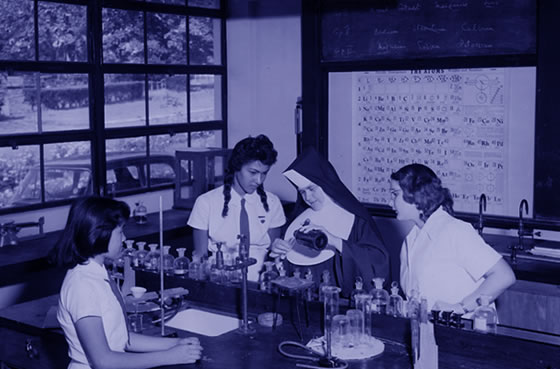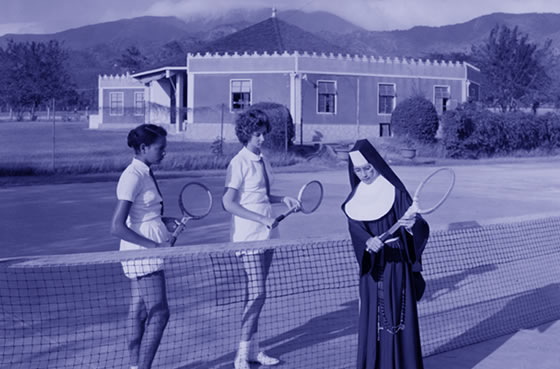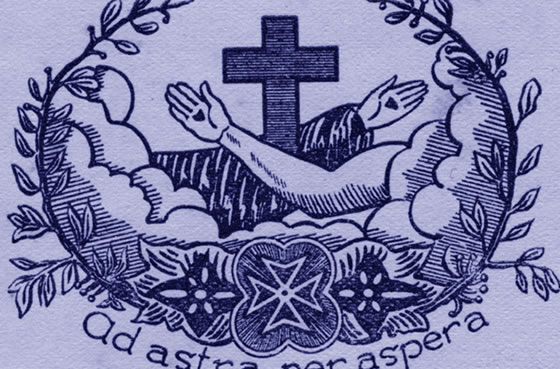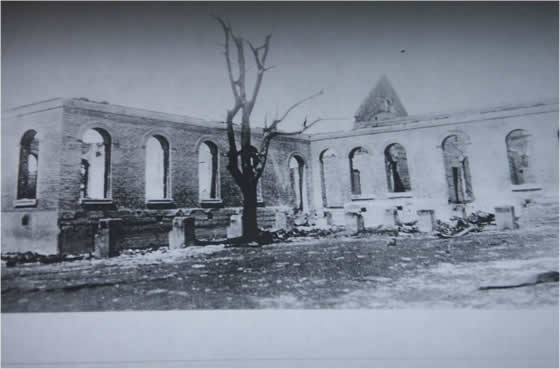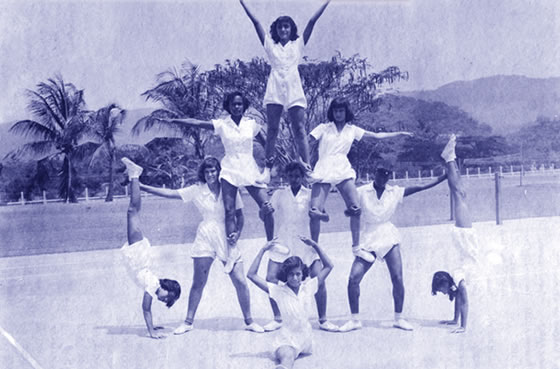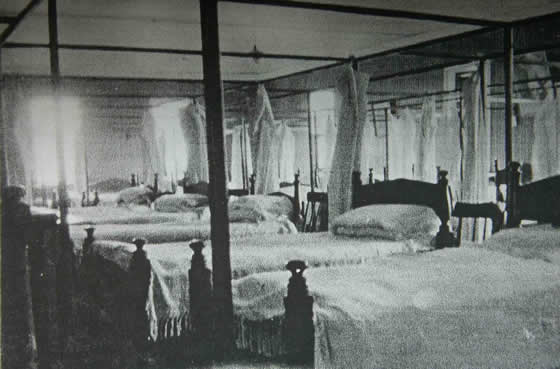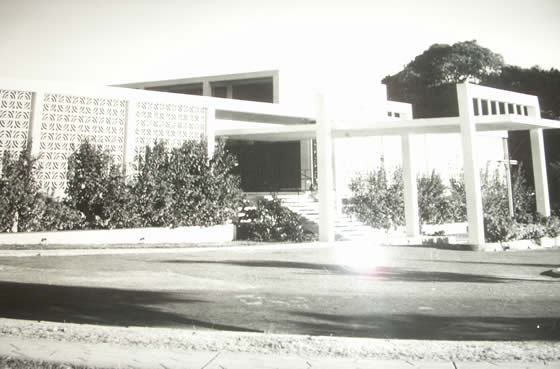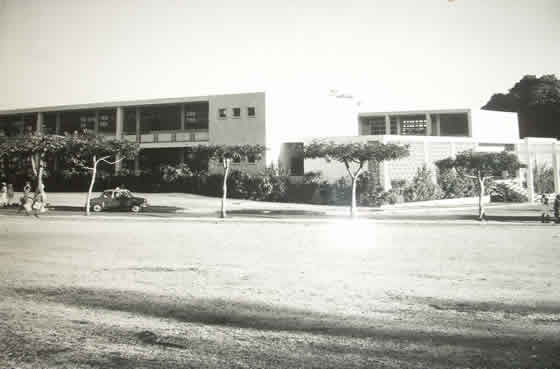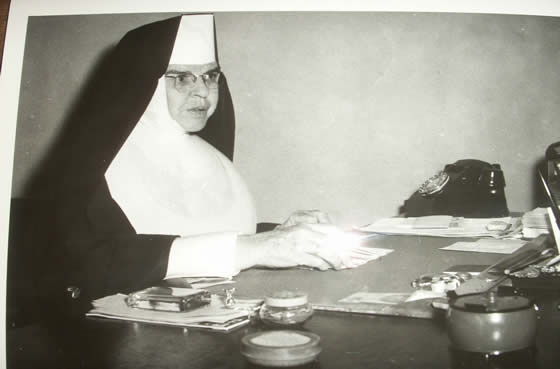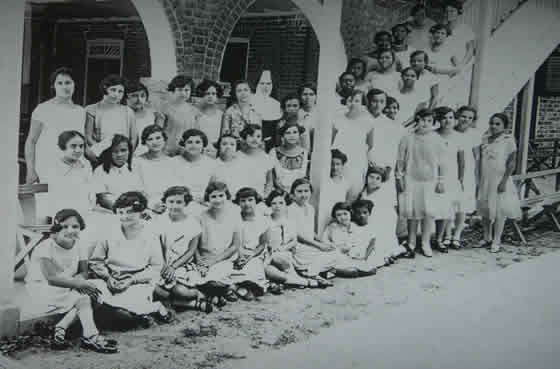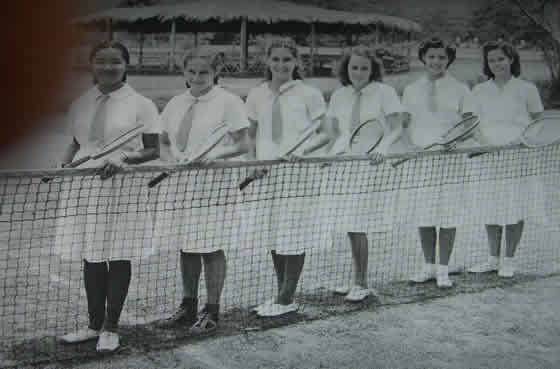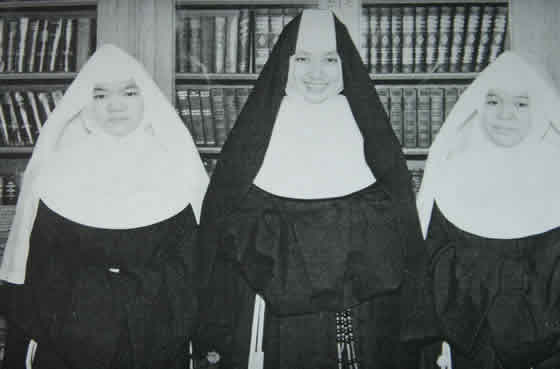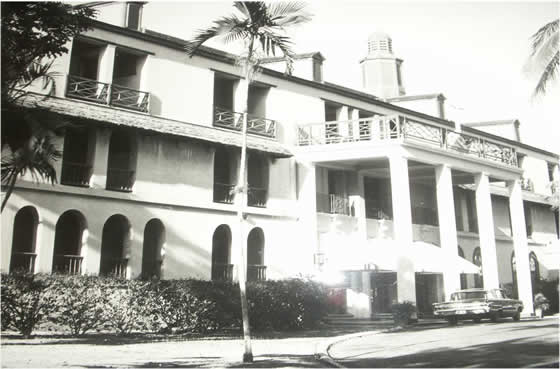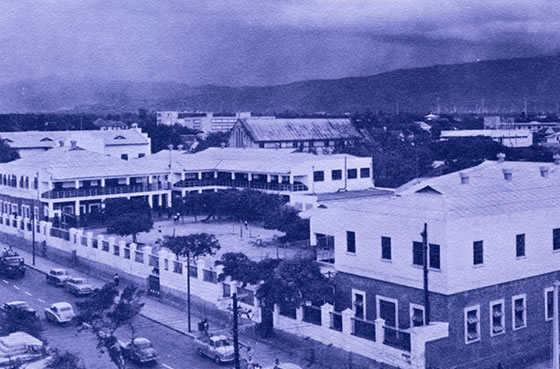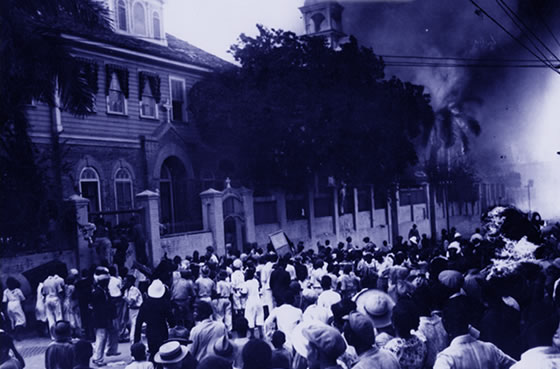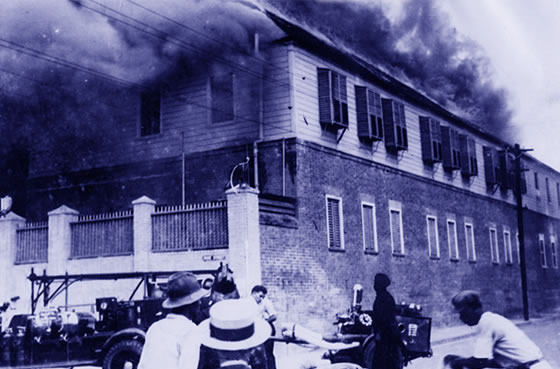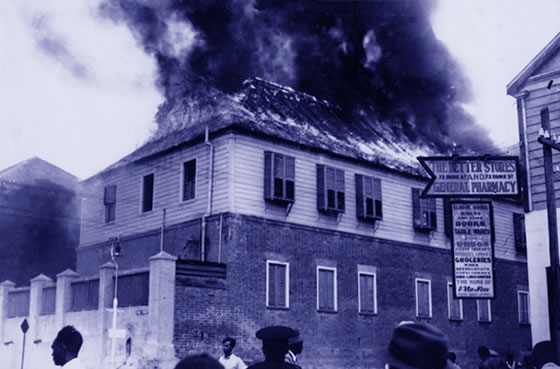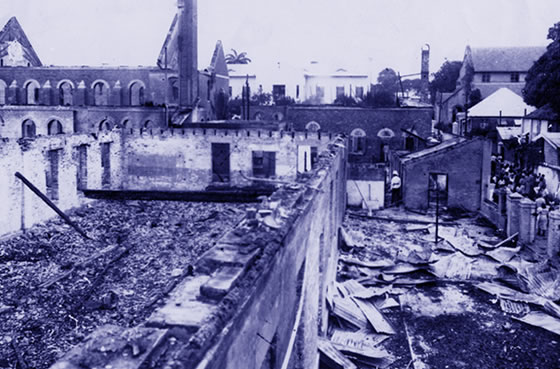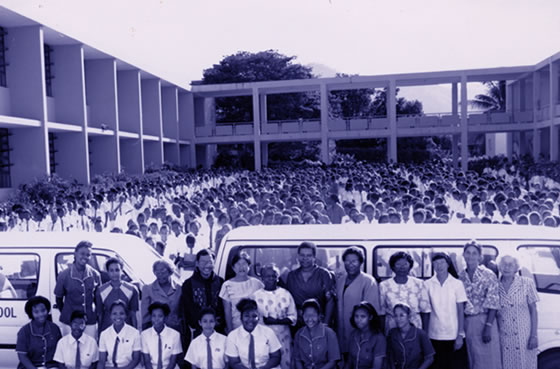OUR HISTORY
FRANCISCAN SISTERS CAME FROM SCOTLAND IN 1858 TO ESTABLISH IMMACULATE CONCEPTION ACADEMY, A BOARDING AND DAY SCHOOL FOR GIRLS.
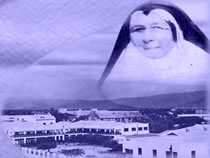
For this work, Mother Veronica and three companions had moved on to the Jamaican mission field. Candidates from prominent Jamaican families soon increased the Sisters' numbers. Of these, the two D'Aquin and Sisters brought as their dowry the property known as Nun's Pen. Finding that it was no longer possible to obtain more Sisters form Scotland, an appeal for assistance was made to the Franciscan Sisters of Allegany. In 1878 Sister Veronica, Dominica and Raphael arrived in the West Indies. The Allegany Franciscan Sisters joined with the Sisters from Scotland in directing the missions.
Mother Paula, who succeeded Mother Veronica guided the Sisters through the disastrous earthquake of 1907 that demolished in a few awful minutes the work of fifty years. The ensuing fire totally destroyed the building on Duke Street, leaving the sisters' Nun's Pen as a haven for the time. They began to rebuild their shattered schools, and before Mother Paula's death in 1914, nearly all had been reconstructed.
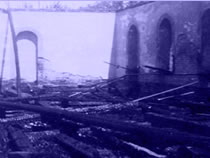
Mother Paula was succeeded in office by the Alegany Sister Mother Veronica, who spent forty - two years in the Jamaica mission. Her successor was Mother Alacoque. Under her direction, schools opened at Montego Bay and Highgate, and Immaculate Conception High School expanded as a grant-aided school. All the Sisters' schools were flourishing when a second trial came: an extensive fire destroyed the whole group of buildings at Duke Street.
The Constant Spring Hotel

In 1888 the American Hotel Company established in Constant Spring St. Andrew, a luxury hotel. This hotel and the Myrtle were the first attempts at creating a real hotel industry in Kingston.
The hotel was the first building in Jamaica to be fitted with electricity and indoor plumbing. In addition it was the central factor that initiated development of this rural area. The Constant Spring Post Office for example was instituted primarily for the use of the hotel's patrons. Unfortunately the hotel was never to be a financial success.
At this time only the very wealthy could afford to 'vacation' let alone do so abroad. In any event tropical destinations were not yet popular and vacationers preferred the 'cultural centres' such as Paris, London and New York. It was necessary therefore for the Jamaican Legislature to take over the hotel in 1895.
During the 1920s, Sir Henry Thornton, and An American born hotelier established a line of luxury hotels. He also owned a steamship line that took vacationers to the West Indies. On arriving in Jamaica on one of these cruises, Thornton realized the great deficiency of accommodation. In conjunction with the fellow hotelier Frank Dudley and Vernon Cardy, an investigation ensued and a recommendation was made for the construction of a 100 room luxury hotel at the Constant Spring site.
The three storey stone building was palatial and lacked no amenities. It was in fact the first building in the West Indies to be constructed for earthquake resistance. The grounds were beautifully landscaped and fitted with tennis courts, a rattan gazebo and stables. In addition the golf course was superbly laid out. Furniture and fittings were the most lavish of the times. All this ran the cost of the hotel over $800,000.00!
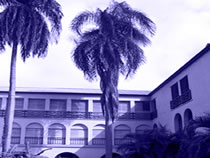
The hotel opened in 1931 offering a number of attractions: Hairdressing salons, balls, teas and five star meals prepared by two French chefs and a Viennese baker. By 1936 however, the hotel had run into great financial difficulty and by 1940 the government felt it was time to put Constant Spring up for sale.
Sir Arthur Richards was then the Governor of Jamaica. He contacted Mother Xavier the Franciscan superior and Sr. Davidica, the principal of Immaculate, and knowing of their plight offered them the hotel. The government was asking a measly $40,000.00. The deal seemed ideal.
In January 1941 the Immaculate Conception High School was reported at Constant Spring. Ninety-nine students were enrolled and 16 boarders. The school students were from the small group of wealthy Catholic residents in Jamaica, as well as those from Cuba, Haiti, Latin America and Canada. The Eastern block of the hotel was used for the boarding school and the west for the convent. Classes were taught on the ground floor where the bar had been. Music was taught in the servants' quarters and domestic science in one of the cottages. The gazebo was improved and became a summer house and site for physical education. To date the only physical changes to the building has been re-roofing after Hurricane Gilbert, and the addition of doors.
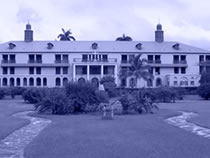
The original building had no doors but Sr. Davidica foresaw the danger this could pose to the girls. In the 1950s the school began construction of classrooms on the lower section of the property. A major building expansion programme was launched in October 1978 and fund-raising plans and drives were accelerated. On December 8, 1980 a new complex, comprising;
In the late 1990s a new Sixth Form building and a Performing Arts Centre (the former Commercial Building) were added. The boarding facilities are no longer offered. However, the school continues today as one of the most beautiful High School campuses in Jamaica.
Our Founders
The history of the Immaculate Conception Academy is inextricably tied to the establishment of the Franciscan Sisters of Glasgow in Jamaica in November 1857, by Mother Veronica Cordier, Sr. Paula Charlet, Sr. M. de Sales O'Neill and Sr. Philomena Dalle. These four women responded to the request of the Very Reverend James Dupeyron S.J., then Vicar Apostolic of Jamaica, and Fr. Joseph Howell S.J. to found a Franciscan Community in Jamaica.
Mother Veronica, who was only thirty-six when she arrived in Jamaica, was also the foundress of the Franciscan Sisters of Glasgow, having previously journeyed to Glasgow from the Monastery of Our Lady of the Angels in Tourcoing, France in 1847. Thus, the historical roots of the foundation of the Immaculate Conception Academy in Jamaica can be traced across the globe to Scotland and France. According to the Franciscan Centenary 1857 to 1957, the Franciscan Sisters of Glasgow arrived in Jamaica with a mere "2/6" (two shillings and sixpence) in their possession. Two shillings and sixpence amounted to thirty pence or, in terms of dollars and cents, approximately twenty-five cents.
However, very soon after their arrival, the Roman Catholic clergy and laity provided the Sisters with monetary support and accommodation. Henry Vendryes, a prominent member of the Catholic community in Jamaica made his house on East Queen Street available to the Sisters. It was at East Queen Street that the Sisters opened the Immaculate Conception Academy, as a boarding school and a day school for girls. The Gaiety Theatre was later housed in these same premises.
FRANCISAN SISTERS OF ALLEGANY
When the Franciscan Sisters of Glasgow were no longer able to continue sending sisters to Jamaica, their vision and work in the field of education was undertaken by the Third Order Regular of St. Francis of Allegany, New York (the "Franciscan Sisters of Allegany" ). In 1879, Sr. Mary Veronica Murphy, Sr. Mary Raphael McCauliff, and Sr. Mary Dominica Enright, answered the call of the Very Reverend Thomas Porter, then Vicar Apostolic of Jamaica and sailed to Kingston on the banana boat named "Clarabelle."
According to the Novena of Decades of the Third Order Regular of St. Francis of Allegany, New York, these pioneering women became the first of their Order to leave America for work in another country" and the Franciscan Sisters of Allegany, the "first American Community to go on a foreign mission. "These sisters left America when their community was only twenty years old.
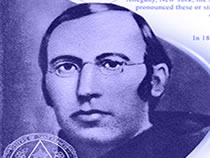
You shall no longer be known as Mary Jane Todd, but as Sister Mary Joseph. This time is April 25, 1859; the place, the chapel of St. Bonaventure College Allegany, New York; the speaker, Reverend Pamphilo da Magliano, O.F.M., who pronounced these or similar words to the first member of the new Community of Sisters being established by him in a small corner of western New York State.
In 1854, Bishop John Timon, the first Bishop of the Diocese of Bufafalo, journeyed to Rome to be present when His Holiness, Pius 1X proclaimed the Dogma of Immaculate Conception. Before leaving the State, Bishop Timon had determined to ask the Minister General of the Franciscan Fathers to send him Friars to labor in his newly formed Diocese. The result of the Bishop's determination was the coming in 1855 of Father Pamphilo and three companions.
They first established themselves in Ellicottville, New York, but soon took up residence in Allegany on the tract of land given them by Nicholas Devereux.
Almost immediately, Father Pamphilo set about the business of establishing St. Bonaventure College for the education of young men. His time was much taken up with plans, buildings, fund-raising and more important, the guiding and training of the members of his community of whom he was the superior.

Inspite of all this, he did not forget the remainder of his dream, the establishing of an institution for the education of young women. Just at this time, too, in the city of Philadelphia, were two young Irish women, Mary Jane Todd and Ellen O'Fallon, who desired to serve God through service to their fellowmen. Hearing of the Franscicans in Allegany they decided to go there and make known their aspirations.
Mary Jane came first with Sister Michael McFall of the Glen Riddle Fransciscans. She presented herself to Father Pamphilo and shortly thereafter the ceremony of her clothing and her name-giving as mentioned above took place. Two months later in June, Ellen O'Fallen joined Sr. Michael and Sister Joseph. Father Pamphilo received her also and gave her the name of Sister Bridget
It was in the Fall of this same year that a third member joined the group in Allegany. Father Pamphilo had met Mary Anne O'Neil while visiting in Fort Lee, New Jersey. He was immediately impressed by the qualities of this fifteen year old girl and upon questioning her learned from her own lips that she wanted to become a Sister "when I am old." Father Pammphilo explained to her that waiting until she was old was a lack of generosity to God.
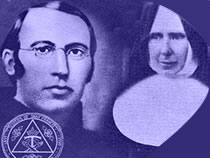
It did not take Mary Anne long to realize this truth and after overcoming the opposition of her parents, who thought her too young, she found her way to Allegany. A third time the college chapel was the scene of a Reception Ceremony. At its conclusion, Mary Anne O'Neil came forth clothed in a brown Franciscan habit and bore the name, Sister Mary Teresa. God's plan was in the fulfilling this 8th day of December 1859 and a long future was to know its effects.
The small Community settled down under the guidance of Sister Michael who stayed with them three years to prepare and train them for their lives as Fransciscans. Father Pamphilo was never far away and he and Father Michael Raybaudi, in spite of their many arduous duties, were ever watchful and solicitous of the Sisters.
For the first few years Father Pamphilo appointed the Superiors of St. Elizabeth Convent. Then in July 1865 all the Sisters assembled in Chapter to vote for the Reverend Mother. Their choice fell upon Mother Teresa O'Neill, a young woman of twenty-one years, to lead the newly founded, growing Community, to give it permanency and stability and to guide its growth and to expand the scope of its work. Mother Teresa was to act in the capacity of Reverend Mother, except for four interim years, until her death in May 1926.
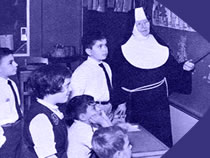
Expansion now faced the small community as a request for Sisters came from Winsted, Connecticut. The reverend Leo Saracena, O.F.M. was pastor in Winsted and wished to have Sisters to teach in his parish school. A call for help from the Friars was not to be treated lightly by Mother Teresa. Consequently, two sisters were sent to establish St. Margaret' School. From Allegany to Winsted was a momentous journey in 1865 and its undertaking must have required great faith and courage. Neither Mother Teresa nor her spiritual daughters lacked either quality, so the journey was made and a parochial school established in Winsted.
Once more in the first year of term as Reverend Mother the Friars appealed to Mother Teresa for Sisters. The appeal this time came for a school in St. Patrick' Parish, Buffalo. At St. Clare' Convent, as they had at St. Margaret' in Winsted, the Sisters opened a private academy for young ladies. Poverty and hardships were experienced in both of these missions but thoughtful priests and generous appreciative people lightened the burdens to make labor in His vineyard a thing of joy and love.
The Allegany Community was to suffer a great loss when their beloved founder, Father Pamphilo, was recalled to Rome by his superiors in the Fall of 1867. At first it was not understood that Father Pamphilo would not return but as time passed and no word of his returning was received, all came to realize that he was in Italy to stay.

The Sisters missed this humble Friar, who founded them, taught them Franciscan spiritually, guided them through uncertain days, kept their accounts and procured for them an approved Rule. Their prayers were with him always, and even now, almost one and a half centuries later, the Sisters of the community he established still honor him daily in their prayers.
But nothing must stop God's work and Mother Teresa was not one to let personal grief interfere with their duties. Step by Step, day by day, she was nurturing the seed that has been sown, preparing her charges to be ready for the Apostolate. A group was ready when a few years later the Fransiscan Fathers again sent out their call.
This time, Sisters were sent to New York City to teach in St. Anthony's the first Italian parish in America. The goods of this world were scarce in this mission as in the others but hearts were open and generous and the Sisters shared their meager resources with two Italian sisters, Mother Maddalena and Sister Maria Costanza, who were the foundresses of the Poor Clares in America. Now an entirely new venture was considered by Mother Teresa. In 1878, her Sisters were to go to the foreign missions. Three of them were to set sail from New York, spend weeks on board ship and travel miles over stormy ocean to reach their destination, Jamaica in the British West Indies.
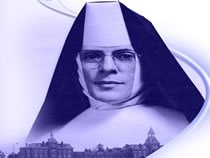
Here, they would join with Franciscan Sisters from Scotland, who had established a boarding and day school for girls, which they named "The Immaculate Conception Academy."
Principals

The Immaculate Conception High School has always had a tradition of women indomitable spirits at the helm. This precedence existed even in the years when the school had its debut on Duke Street in downtown Kingston.
Sister Davidica, the first head of the school to be called principal, occupied the position from 1922-1962. It was under Sister Davidica's watch that the school was relocated to its present home in Constant Spring.
She was to be succeeded by another champion lady in the person of Sister Maureen Clare who served in the period 1963-1991. She is fondly remembered as lovable but strict in her role as administrator. She is the current head of the Franciscan Sisters in Jamaica.
Upon Sister Maureen Clare's retirement, Mrs. Jean Fong Kong Geography teacher and Vice-principal for eighteen years acted as principal. Sister Mary Catherine, principal since 1992 until 2004, has exemplified herself to be as eminent and impressive as her predecessors and has inspired admiration, love and support from both pupils and staff.
The retirement of Sister Mary Catherine in 2004, saw alumnus Bridgette Pinto assuming the role of acting principal. Miss Pinto had served Immaculate since 1985 and had been Vice-principal since 1999. Franciscan Sister Angella Harris, former principal of Mt. Alvernia High and also a former teacher at Immaculate, is the current principal since September 2005.
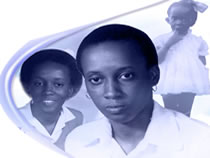
Sister Angella Harris
Born in the sleepy town of Spaldings, Manchester to parents both employed in the education sector, Sr. Angella Harris has dedicated 25 years of service to the development of education Jamaica.
In 1964, Sr. Angella's father, the then principal of a school, moved his family to the bustling city of Kingston in order to fill a vacancy in Kingston. Sr. Angella attended the Harbour View Primary School and later on Providence Primary. From the latter school, she graduated to St. Hugh's High School where she proved to be an excellent student. Her comportment propelled her to the rank of Prefect, Student Council Representative and Form Captain. She was also an active member of several extra-curricular activities such as Girl Guides, Netball, hockey and track and field.
Sr. Angella Harris is an extraordinarily energetic individual whose energy has intensified over the years. Subsequent to her graduation from St. Hugh's in 1979, she went on to successfully pursue a degree at the University of the West Indies. On completion of the degree, she went to study at the Sam Sharpe Teachers College and the Central Connecticut State University. Her academic development paralleled her religious maturation and in 1982 she was converted to Catholicism, and decided to enter the convent.
Following her conversion, Sr. Harris taught at the Hillel Academy for a year prior to teaching at Immaculate Conception High School for five years. Subsequent to leaving Immaculate, she went to fill a vacancy at the Mount Alvernia High School where she spent an impressive 16 years, the last ten of which she served as principal beginning in 1995. Sr. Harris returned to take over the reins of Immaculate Conception High School where she currently serves as principal.

Sister Mary Catherine
Sister Mary Catherine is the third principal of Immaculate Conception High School, adding to the tradition of outstanding women who have headed the institution.
Born in Kingston, Jamaica, the second of five girls, Sister Mary Catherine is a graduate of Immaculate Conception High School. Having joined the Franciscan Order at age 17, she received her Bachelor of Science degree in Education from St. Bonaventure University in New York. She pursued higher degrees; receiving a Master of Arts degree in Spanish from Middlebury College in Vermont (USA) and a Master's degree in Education from Boston College (USA). She also studied on scholarship at the University of Madrid in Spain and the Catholic University in Puerto Rico.
Sister Mary Catherine's invaluable commitment to teaching is reflected by the various positions she held in several institutions, among them St. Aloysius Boy's school (Kingston), Mount Alvernia High School (Montego Bay), and Immaculate Conception High. In Bolivia, she also served as the Principal of the Colegio Fatima in 1982 and Seminario de Espititu Santo in 1983. Sister is committed to bringing out the best in everyone. Her many and varied talents also include playing tennis and the violin for recreation.

Sister Maureen Clare
Born of the Hall family and christened Clare, she entered Immaculate at an early age, and proved to be a brilliant scholar. Sister sat the Senior Cambridge Certificate (similar to the G.C.E O'Level) when she was only 13. She passed with flying colours and then took the highest Schools Certificate (A'Levels) at 15.
After her outstanding high school career, Sister entered the convent as she had decided to become a nun many years before. She did her undergraduates studies at St. Bonaventure University in the U.S.A., La Valle University in Quebec, and returned to St. Bonaventure to read for her Masters in Educational Administration. Later, Sister also did Masters in Catholic Liturgy at Catholic University in Washington. Here she again distinguished herself in these varied disciplines.
However, academics were not Sister's only indulgence, as she was involved in extra-curricular activities. She was a member of the Glee Club, Prefect of the Sodality, House Captain, member of the sports teams, and also Head Girl. Sister Maureen Clare is an accomplished musician, and has a beautiful singing voice.
During her 28 year tenure as headmistress from 1963 -1991 Sister developed a reputation as a disciplinarian who despite her heavy schedule, always made time for those in need of help.

Sister Davidica
Since the inception of Immaculate Conception High School, the first head of the institution to be referred to as Principal was Sister Davidica. She succeeded Mother Alacoque in 1922 and served until her retirement in 1962. She led valiant recovery of the school after the second devastating fire that totally destroyed the Duke Street facility.
Sister Davidica can easily be referred to as mother of modern Immaculate as it was during her stewardship that Immaculate was reincarnated at its present location.
It is also worth mentioning that Sister Davidica served as Principal when both Sister Maureen Clare and Sister Mary Catherine, (the principals of Immaculate) were students at Immaculate.
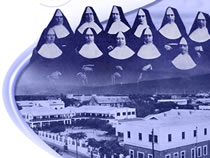
Principals 1857-1921 (The Early Years)
In the early years, it is not certain whether or not the heads of the Immaculate Conception High School were referred to as principals.
However, the first person to head the school was co-founder Sister Veronica. Mother Paula, who guided the Sisters through the disastrous earthquake of 1907 and the ensuring fire that totally destroyed the buildings on Duke Street, succeeded her. Under Mother Paula's tenure, the Sisters began to rebuild their shattered schools, and before Mother Paula's death in 1914, nearly all had been reconstructed.
Mother Paula was succeeded in office by the Allegany Sister Mother Veronica, who spent forty-two years in the Jamaica mission. Her successor was Mother Alacoque. Under her direction, schools opened at Montego Bay and Highgate, and Immaculate Conception High School expanded as a grant-aided school.
Mother Alacoque was succeeded by Sister Davidica, under whose tenure the Immaculate conception High School was relocated to its present location.












